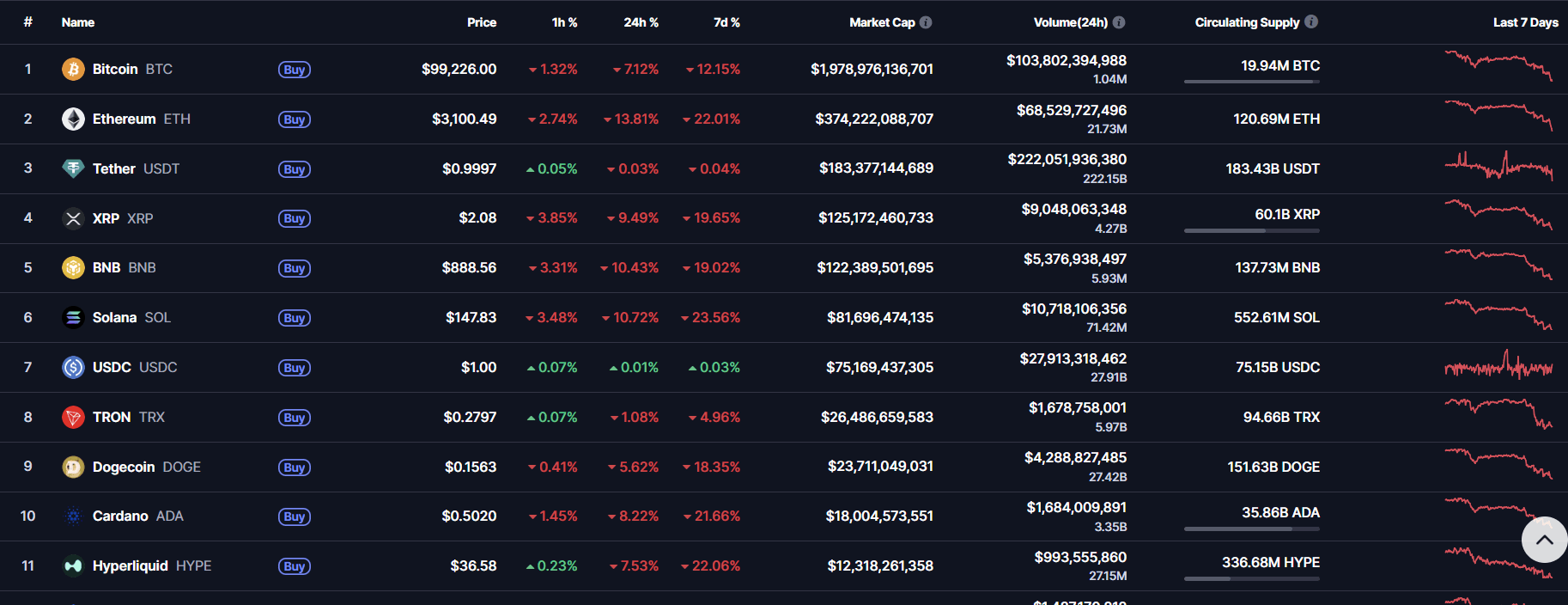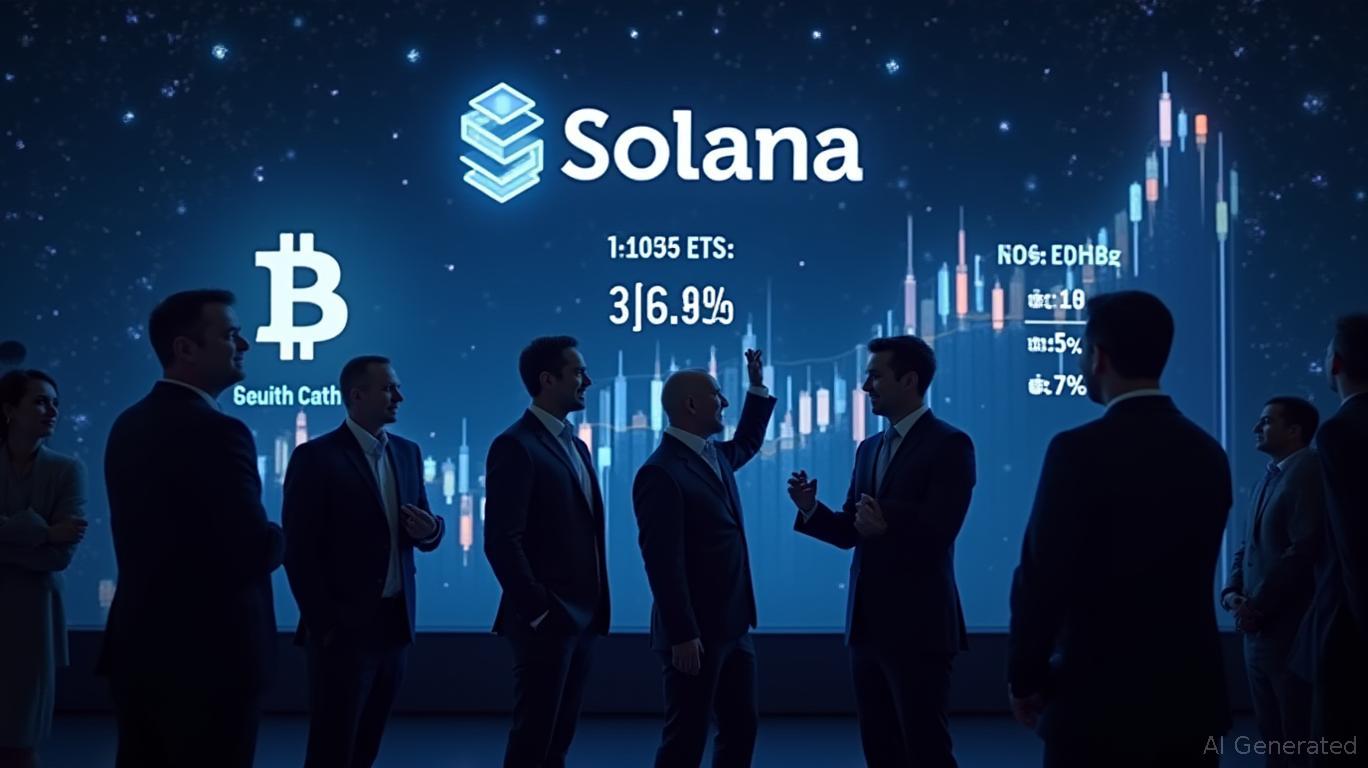Stellar (XLM) Rises 1.15% Amid Smart Contract Growth and On-Chain Data Indicating Fundamental Change
- Stellar (XLM) rose 1.15% in 24 hours amid 700% smart contract growth and $5.4B RWA volume, signaling potential market realignment. - Protocol 23 upgrade boosted transaction throughput to 5,000/sec, enhancing institutional use cases like remittances and asset tokenization. - Developer activity surged with 200+ new projects and 150% higher daily active addresses, indicating robust ecosystem adoption. - Backtest analysis showed -2.36% 30-day returns after 10% drops, underscoring long-term risks despite shor
Stellar (XLM) saw its price climb by 1.15% over the last 24 hours as of November 3, 2025, reaching $0.2768. Despite this uptick, the token is still down 10.89% for the week and 15.42% compared to a year ago. This recent price action comes after a surge in on-chain activity, including a 700% jump in smart contract usage and $5.4 billion in real-world asset (RWA) transactions. These shifts point to changing momentum and a possible restructuring of the token’s market dynamics.
The rapid increase in smart contract launches highlights Stellar’s growing significance in financial infrastructure, as developers turn to the platform for programmable finance solutions. This momentum has been fueled by the Protocol 23 upgrade, which raised the network’s transaction capacity to 5,000 per second, making it more suitable for institutional applications such as remittances and asset tokenization. The addition of RWAs further cements Stellar’s role as a connector between conventional and digital finance, providing scalable, regulatory-compliant options for assets like real estate and commodities.
The network’s expansion has attracted both institutional and retail interest, with major collaborations in global payments and remittance services boosting its practical value. Developer engagement has surged, with more than 200 new projects launched just this quarter, reflecting strong ecosystem development. Moreover, a 150% increase in daily active addresses indicates rising user participation, suggesting genuine adoption rather than mere speculation, which is promising for long-term growth.
Technical analysis also supports the idea of a fundamental shift.
Backtest Hypothesis
To assess the impact of XLM’s recent on-chain and technical shifts, we conducted a backtest focusing on price reactions to steep weekly drops. Between January 8, 2022, and November 2, 2025, we found 155 occurrences where XLM fell by 10% or more in a week. For each case, we monitored XLM’s 30-day performance and compared it to a buy-and-hold approach.
The analysis revealed mixed outcomes. Over the short term (1 to 5 days), the median recovery ranged from 0.5% to 1%, with success rates close to 50%. By the seventh day, average returns leveled off, and by day 30, the cumulative average return dropped to -2.36%. In comparison, a buy-and-hold strategy produced a 6.65% gain over the same timeframe. These results indicate that while brief recoveries can occur after sharp declines, longer-term returns following a 10% weekly drop generally lag behind passive holding.
The findings highlight the critical role of timing and risk management when trading XLM. Short-term rallies may be enticing but tend to offer limited upside, while holding for longer periods after steep drops often leads to underperformance. This underscores the importance of choosing strategic entry points and aligning investment choices with broader market cycles and on-chain trends.
Disclaimer: The content of this article solely reflects the author's opinion and does not represent the platform in any capacity. This article is not intended to serve as a reference for making investment decisions.
You may also like
Ethereum Crash Deepens: Can the $3K Line Hold or Will It Break Next?

Bitcoin Updates: Swiss Crypto Lending Offers 14% Returns Alongside Bank-Backed Insurance
- Swiss crypto lender Fulcrum offers 14% APR on stablecoins with Lloyd's insurance and FINMA regulation. - Platform uses 50% LTV over-collateralization and institutional-grade security to mitigate market risks. - Targets inflation-hedging investors by bridging traditional finance gaps with insured crypto yields. - Competes with alternatives like Bitget's zero-interest loans but emphasizes regulatory compliance and capital preservation.

Bitcoin News Update: Analyst Highlights How MSTR's Convertible Bonds Prevent Forced Bitcoin Sales
- MSTR's convertible debt structure allows debt repayment via cash, stock, or both, avoiding Bitcoin sales during market downturns. - The company raised €350M through a 10% dividend-bearing euro-denominated preferred stock offering to fund Bitcoin purchases. - Q3 results showed $3.9B operating income from Bitcoin gains, driving a 7.6% stock surge to $273.68 post-earnings. - Risks persist if Bitcoin fails to rally in 2028, potentially forcing partial liquidation amid $1.01B 2027 debt obligations. - MSTR hol

Solana News Today: Solana ETFs Surpass Bitcoin as Staking Returns Attract Institutional Investments
- U.S. spot Solana ETFs (BSOL/GSOL) attracted $199M in 4 days, outperforming Bitcoin/Ethereum ETF outflows. - 7% staking yields drive institutional inflows as investors rotate capital from major crypto assets. - Despite ETF success, SOL price fell below key support levels, raising concerns about $120 price floor. - Strategic staking and treasury purchases boosted Solana's institutional appeal, with $397M in staked assets. - Market remains cautious as ETF competition intensifies, with Bitwise's BSOL outpaci
